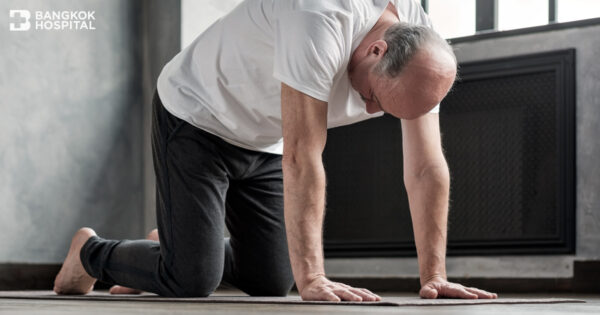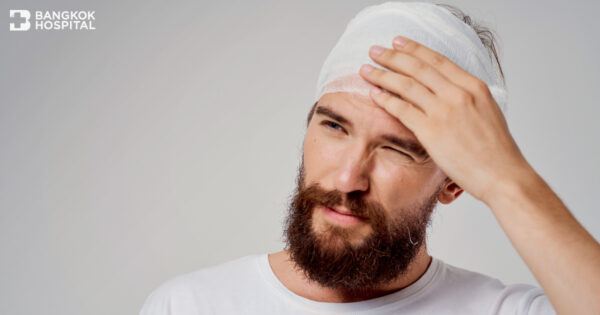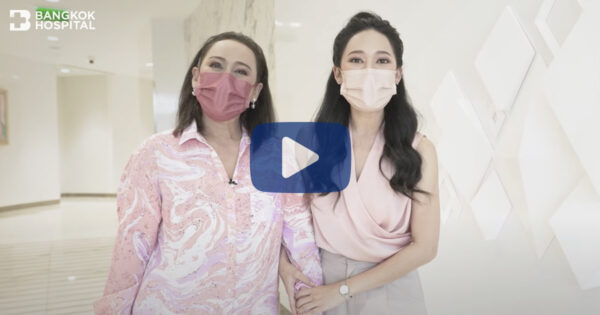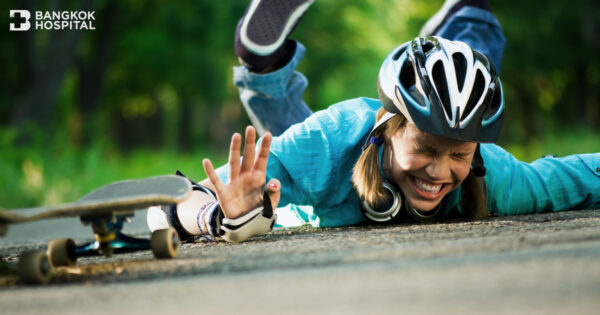One of the most common health-related problems in the elderly aged over 65 is accidents including falls. Life-threating consequences of falls in the elderly are hip fractures and brain injuries, contributing factors to permanent disability and increased risk of death. Aggravating factors in the elderly that increase traumatic severity are certain underlying diseases and osteoporosis that easily causes fractures since the density of bone is reduced and bones become more porous and fragile. Fall assessment in elderly people acts as a vital key in order to evaluate a patients’ likelihood of falling, allowing patients and care takers to reduce fall severity and consequences if a fall inevitably happens.
Fall risk assessment in the elderly
Risk factors for falls in the elderly include age, certain medications, cognitive impairment and sensory deficits. To identify risk of fall, fall risk assessment consists of a falls history, medication review and physical examination as well as functional and environmental assessments. Basic fall assessment in the elderly can be made by using these criteria:
- Age: The frequency and risks of falls increase with age and frailty level.
- Fall history: In the past 6 months, if the patients had previous history of falls, the chance to have recurrent falls increases.
- Weakness: In case patients have arm or leg weakness, risk of falls greatly increases since patients lose their muscle strength, resulting in inability to assist themselves in case of slips or falls.
- Urinary incontinence: Urinary incontinence is strongly associated with an increased likelihood of falls in the elderly. This condition can contribute to fall risk in several ways. Urge incontinence defined as involuntary leakage accompanied by urgency may increase risk when elderly people hurry to the toilet. In addition, incontinence can lead to episodes of dizziness, leading to an increased risk of falls.
- Visual impairment: Older people with sight impairment are more likely to fall. Impaired vision leads to wrong distance estimation, resulting in stumbling or falling down stairs.
- Being afraid of falls: If patients are concerned about falls, this likely prevents them from having regular exercise and performing daily activities which eventually leads to muscle weakness.
- Certain underlying diseases: Some underlying conditions can contribute to falls in the elderly such as hypertension that potentially causes dizziness and diabetic foot which affects the stability and walking ability, resulting in higher chances of falls.
Falling down and safety getting up
After elderly patients fall, lying on the floor for a long time or getting up incorrectly could cause additional injuries although they are probably not seriously injured from the fall itself. To have a safety fall, the elderly can proactively learn safe techniques for how to get up from a fall. Knowing what to do if a fall does occur and practicing ahead of time greatly give the elderly confidence that they will be able to assist themselves and minimize injuries. In case that falls happen with serious injuries e.g. fractures, elderly patients can call for help from the others while remaining in the safe positions.
Practicing of falls
During fall practice, soft mattress that can support body weight and collision impact should be prepared.
(REF : https://www.youtube.com/watch?v=o9ZTeHAH9fw)
Falling forward
- Standing and facing towards the mattress.
- Kneeling down slowly until both knees touch the mattress.
- Stretching both arms forward to bear the body weight while both feet are moving a bit up from the floor.
- Paying special attention is highly needed to prevent face and head from being injured.
Falling sideways
- Standing with the dominant side next to the mattress.
- Getting down slowly and leaning sideways toward the mattress by falling the hip, using both arms to bear the body weight. After completing the dominant side, changing to another side.
Falling backward #1
- Standing and turning the back toward the mattress, falling down by using hip and knee to touch the mattress slowly.
- Bearing the weight by using two arms before the body touches the mattress.
Falling backward #2
- Pulling the arms backward and bending the elbows to support the body weight before lying down slowly on the mattress.
- Paying special attention is highly needed to prevent face, neck and head from being injured. Tucking the chin to the chest thus the head does not hit the ground.
How to get up safely
After a fall, it is highly recommended to stay calm and still while figuring out for any possible injuries especially in bones and joints. Moving too quickly can cause more harm. Patients need to slowly move hands and feet, arms and legs to check for pain. If there are no injuries, no headache or neck pain, patients can slowly roll onto the side and take a moment to rest. If there is any injury, pain, leg or arm weakness, patients have to call for help while staying still without movement.
Getting up safely (REF : https://www.youtube.com/watch?v=vGhFHXirU-8)
Step-by-step guide for how to get up from a fall safely
- Lying on the back, if possible. Bending up both knees
- Trying to get up by using the dominant side. For example, during getting up by using the right side, patients need to stretch right arm and slowly turn sideways to the right while using the right elbow to lift up the body. Then patients can use the left hand to help pushing up slowly. Bear in mind that the affected side must not be used to bear the weight.
- Before standing up, patients have to figure out if there are any injuries, pain, headache or dizziness. If patients have injuries, headache or dizziness, it is highly recommended to stay still and call for help without further movements. If the sign of injuries is absent, patients might assist themselves and crawl to grab the nearest spot for standing up or sitting down safely.
- If patients feel steady, slowly push up into a crawling position and crawl slowly on hands and knees toward a sturdy chair or piece of furniture. Don’t rush and rest as needed. Hands should be placed on the seat of the chair. Supporting with the chair, patients need to bring the strongest leg up by putting that foot flat on the ground. The other leg stays in kneeling position. Slowly push up to standing using both arms and legs. Slowly turn around, sit and rest.
Contributing factors to a fall in the elderly
Certain factors that largely increase risks of a fall in the elderly include
- Increasing age with degenerative conditions e.g. impaired vision and muscle strength.
- Lack of attention while talking or walking.
- Home settings e.g. uneven floor levels, improper lighting and untidy stuff arrangement. Environmental modifications are crucial in order to support elderly patient’s mobility and activities of daily living.
If elderly patients fall, it can potentially lead to life-threatening conditions e.g. traumatic brain injuries, hip and spine fractures. Medical assistance must be sought urgently while keeping patients as steady as possible. In addition, family members need to regularly observe any abnormal signs and symptoms. Proper exercise and activities are recommended in order to improve muscle strength, stability and self-confidence of the elderly.
6 key tricks to prevent falls in the elderly
- Gait-assistive devices e.g. canes, crutches, walkers and rails.
- Wearing appropriate outfits and shoes. Too loose shoes must be avoided in order to reduce chances of slip and falls.
- Arranging surrounding environment to support mobility and activities.
- Family members and care takers need to observe any signs and symptoms caused by movement abnormalities.
- Fall practice is vital in order to enhance self-confidence and reduce risks of injuries caused from a fall.
- In case of falls, hip and face must be protected as the first priority.


















